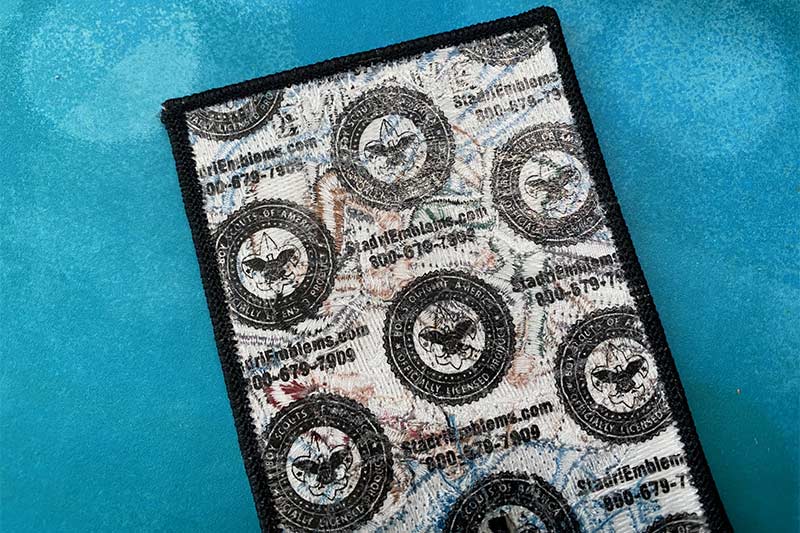No Backing (Sew On)
Patches start out without a backing. These patches will show the twill or threads on the backside of the patch, and are generally more flexible, not having the same thickness or stiffness as patches with backings.
When to use it:
When you will be sewing your patches onto a thin, flexible fabric, such as:
- Polo shirts or sweatshirts
- Sports uniforms
- Neckerchiefs
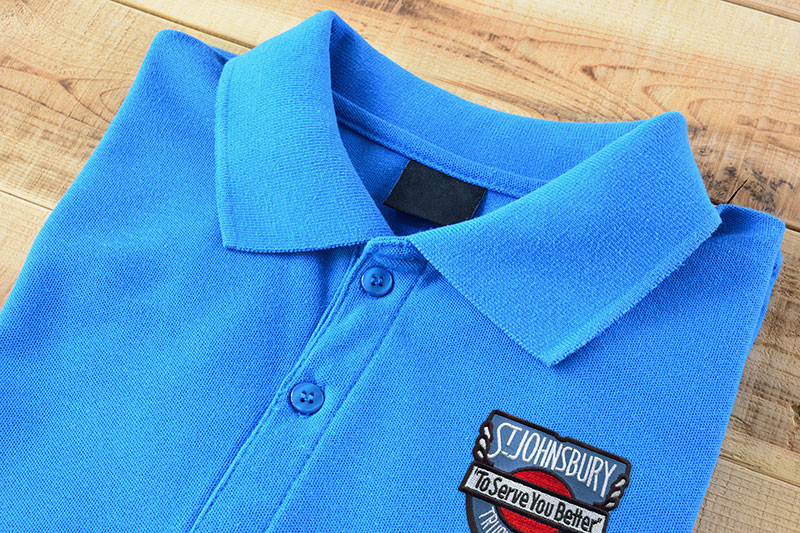
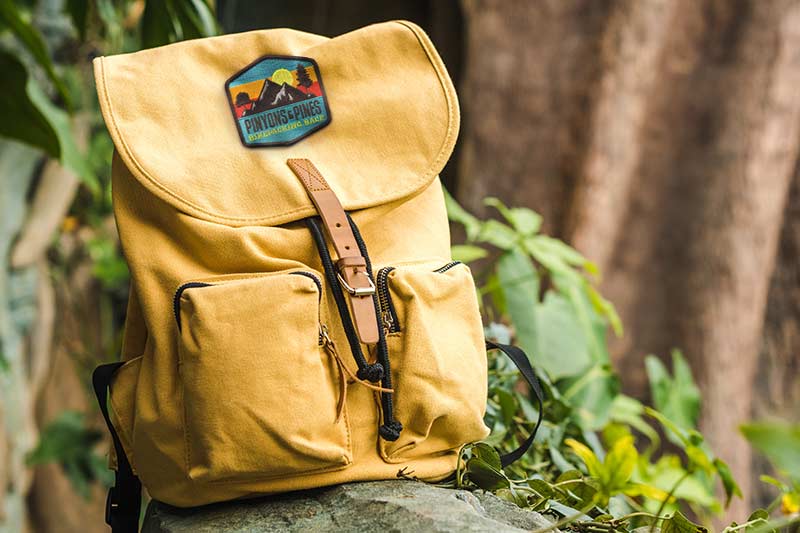
Plastic Backing
Plastic backing adds stiffness and support to the patch allowing it to stay flat over time while still leaving the patch thin enough to be sewn onto a fabric. Plastic can be used with any patch, regardless of size, shape, or border type.
When to use it:
When you will be sewing your patches onto thicker more firm material and need the patch to retain its shape. For example:
- Thick garments such as jackets
- Bags or backpacks
- Any surface that can be sewn
Iron-on (Heatseal)
Heatseal enables patch application to your garment via home iron. This backing adds stiffness to patches, allowing them to lay flat.
When to use it:
When you need to attach your patches to a fabric, but want to do minimal sewing. Use heatseal for:
- Caps
- Garments
- Any natural, non-synthetic fabric
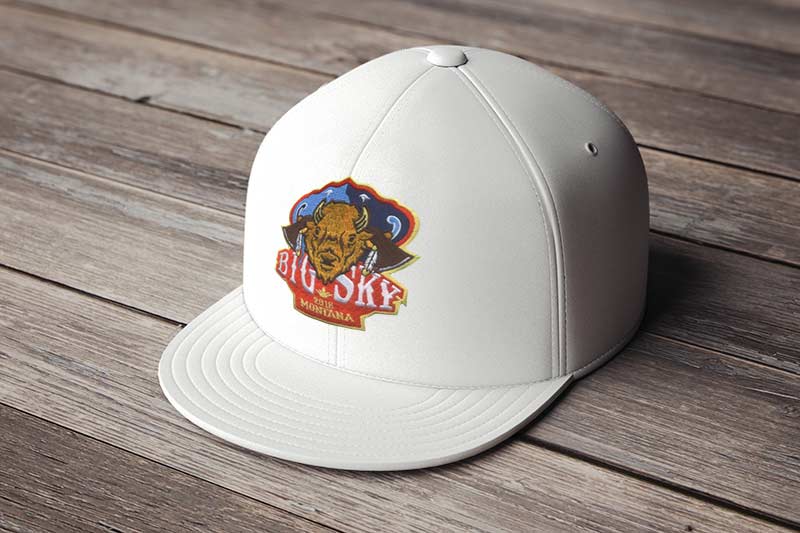
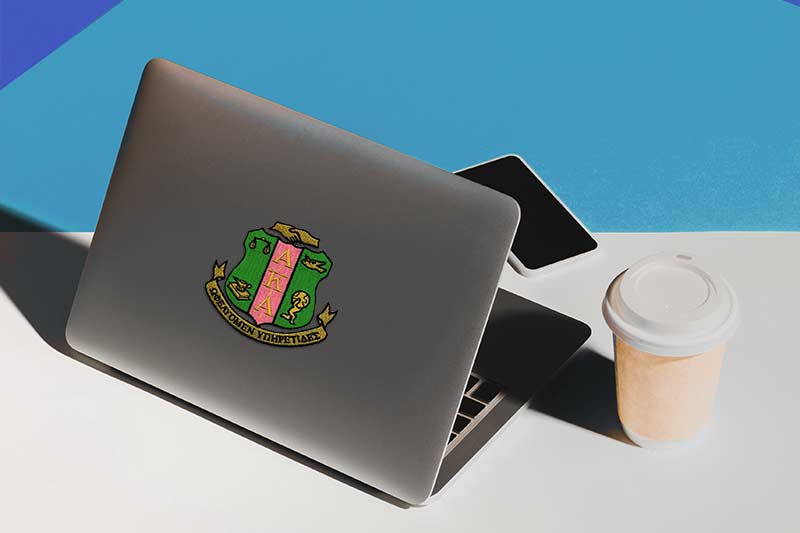
Peel-and-Stick (Adhesive)
Adhesive, in a sense, turns your patch into an embroidered sticker. A glue is pressed onto the back of the patch, then is overlaid with paper to be peeled off at the time of use. An adhesive backing is a non-permanent option when applied to fabric or clothing.
When to use it:
When your patches are being attched to something other than fabric, or when you only need your patches to adhere to fabric for a single event.
- Single Events
- Merchandise
- Branding
Hook
Hook backing is one half of the "hook and loop" type of fastener, (the most popular brand being Velcro®). Stadri chooses to sew this backing to the patch for a stronger bond and longer life.
When to use it:
If you need to remove and reapply frequently and your target surface already has a loop fastener area:
- Tactical Uniforms
- Hats or backpacks
- When specific patches will be frequently swapped

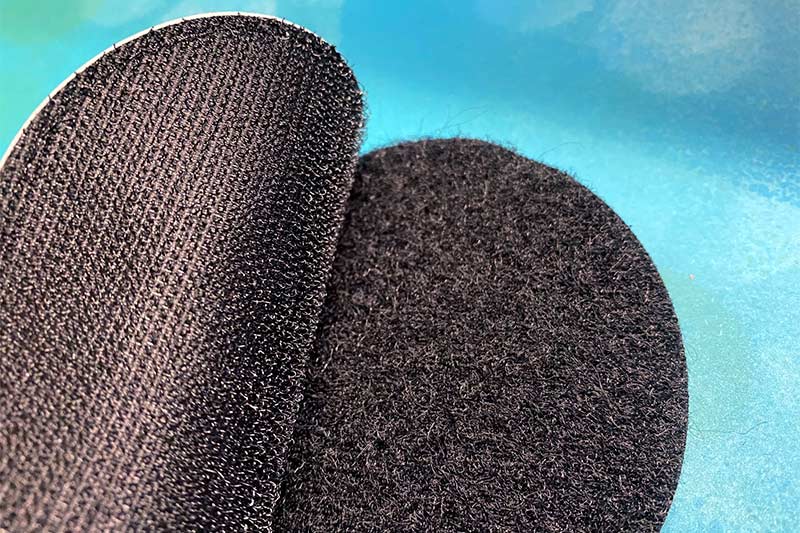
Hook and Loop
This backing contains both sides of the hook & loop backing (many identify this backing by the popular brand Velcro®).
When to use it:
If you need to remove and reapply frequently and your target surface does not already has a loop fastener area. Note that you will have to sew the loop side to your target garment.
- Caps
- Uniforms
- Any place the loop side can be affixed to
Magnet
Half-inch magnetic discs are attached to the patch turning the patch itself into a magnet. The amount of magnets attached to the patch depends on the patch's size; however, they are super-stong—one magnet is usually sufficient for a standard three inch patch.
When to use it:
When your patches will be affixed to a magetic surface
- Business card patches
- Brand recognition
- Patches used as promotional items

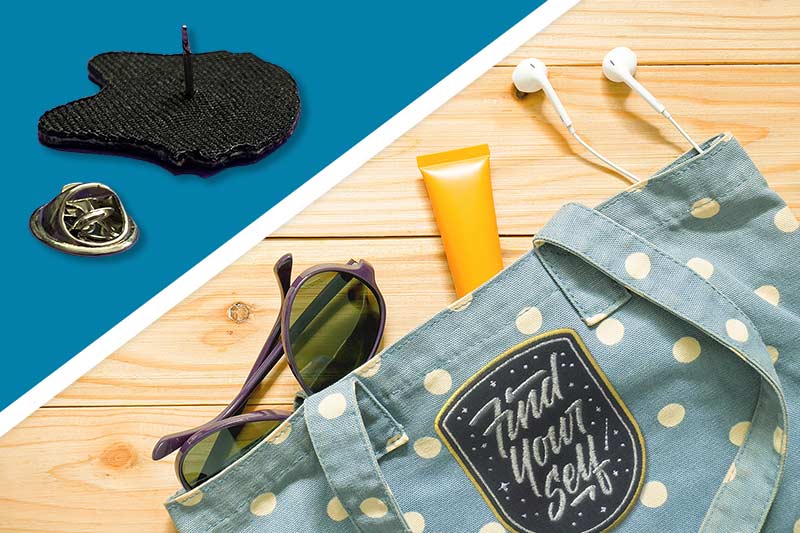
Pin Backing
When the patch is being created, one or more pins are placed inside the layers of backing, twill, and thread, allowing the patch to be used as a pin or brooch. Once pinned through the garment, butterfly clutches (included) are used to secure the patch.
When to use it:
If your patches will have frequent location changes or you want the easiest form of application possible
- Bags
- Lapels
- Jackets for different times of year
Security Backing
Security backing is a layer of thin plastic with your company name or any other information you desire printed onto the plastic.
When to use it:
If you are a reseller of patches, this backing is ideal. Put your logo and contact info on the back, and your customers will always know where their patches came from. Security backing also helps prevent theft and plagiarism of intellectual property of your patch design.
- Brand Recognition
- Plagiarism Prevention
- Licensing
